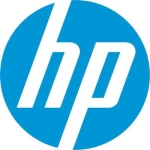What is our primary use case?
The area that I focus on the most is Endpoint Protection. We use Intune to build custom devices and configurations, to push out group policies, and do quite a bit with Azure Log Analytics.
I'm writing a script from a multi-home deployment of the MMA Agent. The use case varies a lot, depending on the clients' needs. Our clients tend to be pretty big companies. The smallest client I have is about 600 people. Our biggest client is about 50,000.
How has it helped my organization?
DFE organizational security posture has been a positive experience. We're a Microsoft house. It works. Once it's deployed and once it's configured, it works and our clients tend to be happy with it. I haven't really experienced anyone who has been so unsatisfied with the platform that they wanted to go a couple of different directions, that has never happened to me.
What is most valuable?
It's Microsoft native. Microsoft is the corporate default, so it makes sense to use security platforms that are baked into the Microsoft platform. That's probably the most valuable aspect of it.
It has specific features that improve our customer's security posture. It makes the monitoring a lot easier and minimizes on-prem administration. A lot of the administrative stuff is all folded into Azure. It makes things easier.
The platform just makes things easier compared to on-prem or hybrid solutions because if you start working in an on-prem solution, most of the time it's going to be a battlefield.
DFE affects the end-user experience when it's deployed. The more freedom a user has on the device, the more they're used to doing things their own way. By locking things down, by having device configurations, you disrupt the workflow. You need a lot of user education where you have to explain why you're doing these things. I'm a part of security. It's twofold, in that users have to get used to the new configurations. And the reason why we might take a little bit longer with pilot phases is that we have to identify how it'll affect the users and how the differences of different business units will be affected. Developers need a more open environment than other solutions.
What needs improvement?
Everything can always be improved. Improvements would depend on the client.
Monitoring can always be better, onboarding can be a little bit faster, log collection could be easier, they could streamline the dashboard. They could maybe split it up into different workspaces and have the ability to segment groups a little bit more.
For how long have I used the solution?
I have been using Microsoft Defender for Endpoint on and off for about three or four years.
It's only the last two and a half years that it's been a big part of my job.
What do I think about the stability of the solution?
Microsoft has some creative accounting when they promise an SLA of 99.99%. But it is generally good. There's always going to be a problem with the cloud. If it works 99% of the time, that's great.
The frustrating thing is, you're not sure if there's a problem with your configuration or if the service itself is down because Microsoft tends to only report that the service is down much later than when you started experiencing things. So sometimes I have to jump onto a private forum or a Slack channel and ask other consultants if they experienced something similar. But when it works, it works. There's never going to be a cloud solution that has 100% uptime.
What do I think about the scalability of the solution?
Scalability is fine. I mainly work with implementation, so I haven't really had to mess around with the scalability. I'm responsible for setting up security policies, and then if they want to do scalability, that's another team. I sit in security.
How are customer service and support?
I haven't worked with support. I generally don't use Microsoft Support.
We were Microsoft partners last year. We're gold partners where we won security partners of the year, so we have an account manager. If it really hits the fan, then I would just talk to him.
Which solution did I use previously and why did I switch?
I've been an IaaS specialist since I began my career. I've done Apple MDM solutions and I've done Google Workspace, but when it comes to actual IaaS, I can't really compare. Because we're a Microsoft house, we generally don't use third parties or competitors.
How was the initial setup?
The complexity of the setup depends on the environment. If it's Greenfield, it's super easy. I've been doing this for two to three years now. Most of the time it's easy. The larger companies have more complex networks and systems. The smaller the company, the easier it is to deploy.
The beginning of the project, like scoping, implementation, the entire process, or just the actual deployment depends on the size of the company. For smaller companies, we'll push some policies out. We'll do a week or two of a pilot phase where we identify different stakeholders and different business units. We collect feedback from them, keep an eye out on the audit logs and if that goes well, then we go into phase two, which takes another week or two where we slowly push out, if it's an accounting department with 60 people, then we'll do batches of 20. We'll have a pilot group of five and then we'll push it out to 20 people at a time.
What's my experience with pricing, setup cost, and licensing?
The project managers worry about the licenses. I get my scope, I know the limitations I have to work with, and then I just make a solution based on that. I'm a very technical consultant and I don't really care about licenses, that doesn't really have anything to do with me.
What other advice do I have?
My advice would be to start small, don't start a project thinking that it's the best solution, and bowl it out straight away. Take your time. Don't think that you'll be able to incorporate the platform within a month, although that would depend on the size of your business. Take your time, there's no rush, be patient. Because there will always be some problems.
I would rate it an eight out of ten.
Disclosure: My company has a business relationship with this vendor other than being a customer. Partner













